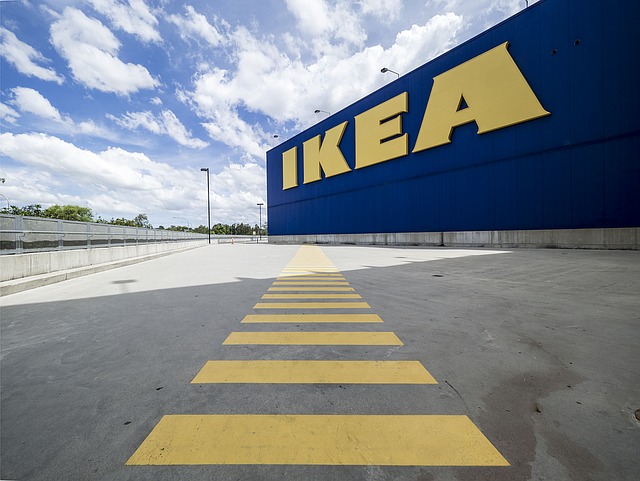I am involved in an engaging organizational innovation exercise with a team comprising business consultants and senior leadership of one of the top healthcare companies in Canada that own and operate over a 1000 pharmacy locations across the country. Apart from several themes one of the aims of this 3-month long exercise is to understand the barriers in the delivery of timely services to patients and finding an innovative solution to wait-times. So, what exactly is a ‘wait-time’ in the context of a pharmacy? In simple terms, it is typically that period in a given service parameter in which a pharmacy customer (patient or caregiver) has to wait before he/she is dispensed the prescribed medication and depending upon the traffic of a specific pharmacy location that period could sometimes run into hours. The current demographic of pharmacy patients consists largely of ‘baby boomers’ who were born in the 40s-60s but that won’t be the case forever because more millennials, the cohort of people generally born in the 80s-90s, have begun to emerge as an influential group not just for healthcare but the retail industry at large. This segment is most prominent for its early adoption of digital apps and automation but the ‘boomers’ aren’t laggards either with adopting a digital lifestyle. As we gather around in focusing on and exploring various options I wanted to present some of my views on tackling wait times (WT) in the incumbent age of digitization. Additionally, I also wanted to share some of my observation and learning on wait times with other brands, in particular, IKEA.
Basics of Wait Times

I would continue with my comprehension of WTs in the context of pharmacies. So, to begin with, what is a wait time and why is it important? In technical terms, a ‘wait-time’ is a crucial factor from the perspective of implementing the prioritization order in a customer queue to ensure that one person’s isolated need/demand does not gain precedence over the others waiting in the line. If managed efficiently on a consistent basis, WTs also play a major role in managing the working time of the pharmacy staff and also helps bring productivity and efficiency into the work culture, such as preparing the medication while the patient waits in anticipation. From a pharmacy standpoint, despite all the clear advantages, there are prevailing challenges which prevents pharmacists from meeting their stated goals. Some of those challenges include lack of team coordination and overlapping (or the lack of) of responsibilities. Then from unskilled staff to complicated digital systems and sometimes even the unavailability of medications at pharmacy locations can not only affect wait-times considerably but could also drastically lower a brand’s value over a period of time. On the other hand, it might be harder to realize but customer wait times are not just limited to pharmacies alone. In fact, in Canada, it’s common for patrons to wait for their turn while availing any form of service just that and experience levels of anxiety and anticipation. Services which have lower levels of expectation generally escape the customers’ ire from bad service experience, whereas others like IKEA have developed a robust & orderly mechanism for addressing wait time challenges using a combination of digitization and environmental factors (store). I have described my experience in IKEA in the post a little later.
Service Anticipation & Wait Times
The one issue with WT and customer expectation is the anxiety arising out of uncertain service delivery times. Despite the promise of delivering in a given time frame, I have discovered through store visits, that it all depends on several key factors such as store occupancy. For instance, at one such visit to my nearest pharmacy location, I was promised a wait time of 45 minutes to pick up my medication after dropping my prescription. However, when I returned to pick up my medication it wasn’t ready at the promised time and I was made to wait inside the store for another 30 minutes, but that’s not all. After the medication finally arrived the pharmacist spent a good amount of time in consultations for the prescribed medication. It’s evident from my experience that a pharmacy it becomes harder for the pharmacists’ team to manage WTs in a high-traffic situation. So what do we do? One solution could be a digital app which could provide real-time details of locations and the busy hours near me, basis which, I could choose a store with low traffic and higher promised delivery time. The issue here isn’t particularly related to the wait for medication, rather it’s the broken promise of not being able to deliver in the promised time, the lack of interaction/experience thereof and the eventual rise of annoyance & anxiety.
IKEA Experience

It’s now well-known that IKEA puts a tremendous onus in delivering service experience by offering visibility over WTs to customers. For instance, in the department of ‘Returns & Exchanges’ which I visited a couple of times I had to select an option at a kiosk that printed a receipt with a 3 figure alphanumeric digit, for example, “C24”. It could also print A, B, or C with a numerical depending upon the type of package being exchanged or returned. The number being served is displayed prominently and since it’s in chronological order the customer in waiting knows it could be his/her turn shortly. By the way, there are several counters operating at the same time so the service delivery is faster. There’s a visible sense of efficiency with which the IKEA staff handles queries catering from returns of unopened packages to damaged goods or even such furniture where the owner has lost the receipt though IKEA’s generous 365 days return policy means products of any nature would be accepted. In comparison with the invisible and long pharmacy wait times, IKEA’s numbering system enables customers to calibrate their expectations and reduce anxiety arising from lack of any visible service indicators.
Banking Industry Dilemma
Though prominently service-oriented and comparatively professional than most industries banks, in my observation, presented one of the least concerns for curbing wait times. For instance, I was at a bank for resolving a query and requested the teller to inform the adviser about my issue. It was the weekend rush at the location so I had to wait until my turn came but it wasn’t until after two long hours and the bank was about to close for the day that I was attended to, that too after I articulated my concern at being ignored by the staff despite no customers waiting in the lobby except me! In my honest opinion, bank locations experience visitor turnover in thousands every day and it could benefit tremendously from a digital workflow which could streamline its customer service intake on a regular basis. Customers don’t have to prolong their stay, they could procure a receipt stating their chronological position in the queue, then depending upon the issue they could be directed to a relevant financial adviser for a resolution. In this case, it’s the acknowledgement of the service priority to the customer that’s crucial regardless of the actual wait time.
In Retrospection
From my observations, interviews with pharmacists and store visits I have concluded that customers are least concerned with the time limit but what happens before, during and after that long agonizing wait that matters the most. In that regard, it is IKEA’s system of operating several counters simultaneously catering to no less than 3 different types of furnishings that impressed me. The products are all guaranteed to be accepted and the money is returned one way or the other depending on certain criteria. At the same time, customers waiting to be served can see how soon they are to be served. There’s also a kid’s playing area in case the kids grow impatient.
On the other hand, pharmacies face challenges of a different nature where customers comprise of patients and caregivers caring for their sick relatives who require a greater degree of emotional support, one has to apply a humane approach through a mobile app which is easily accessible, user-friendly and simple to understand the directions. In an age of where millennials have begun wielding their influence over digital lifestyle, the shift to digital workflows might be the only logical direction to take for companies, it’s also likely that wait time workflows could be automated using AI/ML in reducing anxiety arising out of uncertain wait times which may lead to high-yield in productivity for institutions.


